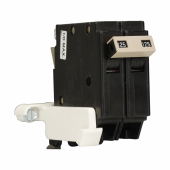My first post and many thanks to Will for starting me on my Solar experience. Based on Will's youtube EG4 48v offgrid build video, I embarked on building a duplicate. I have ZERO experience with DC and solar, but am pretty fair with AC installations. So I purchased two EG4 6500 EX's and wired them in parallel with six EG4 48v 100ah batteries. Everything is working pretty well since I got 1335 watts of solar panel going to each PV1 on each inverter. Batteries are charging well and I have 240v at the main load box. However I do have three issues I cannot resolve.
1. I am getting fault code 61 intermittently both in standby and "on" mode. I can make it go away for a while by switching unit back and forth between stand by and "on". No alarm for an hour or two and then the dreaded beeping. I have battery setting to "EG4", and I have RS485 cables attached from inverters to batteries. Cable from inverter 2P1 is attached to top battery and cable from inverter 2P2 is attached to bottom battery. The RS485 cables that attach between each battery are not installed yet as they were out of stock at Signature Solar when I picked up order, but I am picking up those cables tomorrow along with 36 more solar panels. I read the thread on this forum on assigning battery type to "user" and then defining menu items 26,27, and 29, but darn it these are EG4 inverters and EG4 batteries and they should work together with out any fault codes, lights or beeping.
2. Item 18 on the menu is "Alam control" to turn beeping on or off. System will let me access item 18, system will let me select "off", but system will not save the off selection. I have attempted to select "off" in standby and "on" mode and inverter will default back to "on" for the alarm. I will probably put the alarm to on later, but would like it off for right now.
3. Early in my install, when I would turn the inverters "on" the light bar would run through a sequence of lights and end up with a blue light illuminated all the time. Now, I get no start up light show and the light bar is dark when the inverter is on and working. I do not know what I did to disable the light show.
Long winded questions for a first post, but any help the members can give me would be greatly appreciated. BTW, I placed a tech support call to SS (signature solar) last week and left a message- no call back as of today on that one. Called 3 times today and got kicked out of the que while waiting, finally left another message today-no call back yet. Sent tech support message through their website today-no answer as of yet, so I am seeking help from forum members.
I am approaching this solar adventure as a hobby, because there is no way I can re-coup the $$$ I have spent thus far, and I would have NEVER attempted such a project with out Will's video guidance. I thank him for giving an old guy a new learning experience and having a great time generating energy from the sun.
Cheers!!!



